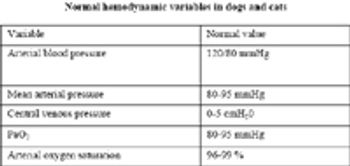Armelle de Laforcade, DVM, DACVECC
Articles by Armelle de Laforcade, DVM, DACVECC

Emergencies related to cardiac disease are common, and can be difficult to differentiate from non cardiac diseases with similar clinical signs. The emergency clinician must be able to differentiate between cardiac and non-cardiac diseases using subtle clues obtained from a brief physical examination, and an understanding of common cardiac conditions.

Coagulation abnormalities are commonly encountered in critical illness. Traditionally, clinically relevant coagulation disorders have consisted mostly of bleeding associated with advanced stages of disseminated intravascular coagulation or toxin ingestion.

Assessment and emergent treatment of the dyspneic cat is often considered one of the most difficult tasks of the emergency clinician. Underlying causes of shortness of breath can vary considerably, and must often be decided with only a history and a brief physical

The ability to accurately assess your patient is a key feature of success for a veterinarian. Although the importance of proper patient assessment is applicable to all fields of veterinary medicine, it is most apparent for the emergency/critical care clinician who may need to make rapid decisions based on observations obtained in a very short period of time.

Smoke inhalation injury represents a unique form of lung injury in dogs in cats. Despite the prevalence of house fires in the United States, smoke inhalation is uncommonly encountered in veterinary emergency practice.

Heatstroke can be defined as severe hyperthermia resulting in thermal injury to tissues. Under normal circumstances, cats and dogs maintain their body temperature over a wide range of environmental temperature variations.

Sepsis is responsible for a large percentage of human deaths each year and the mortality has remained unchanged despite advances in critical care. In small animals, sepsis is also a frequent contributor to morbidity and mortality.




